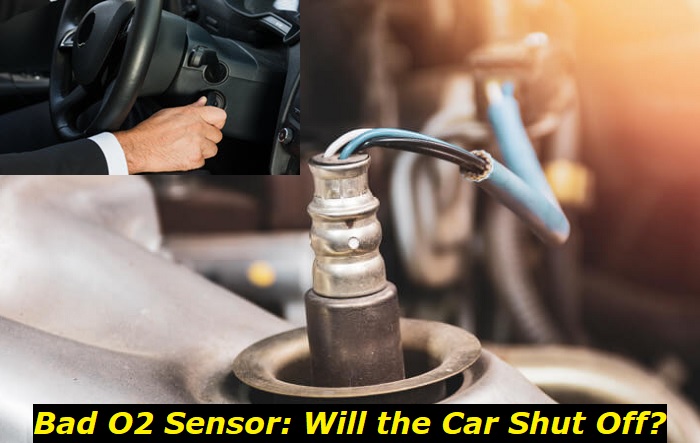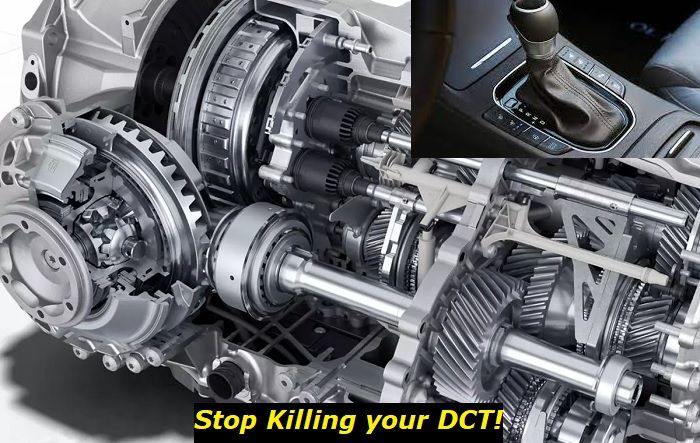One or two of your car's oxygen sensors has gone bad. And you're wondering if that can cause your car to shut off. We'll get to find out in this article and also let you know how to detect a bad oxygen sensor and what you should do to replace the sensor. Let's first delve into what an oxygen sensor is.
Emission system electrical problems highlights
- Level of urgency:medium
- DIY inspection:possible but complicated
- DIY repairs:impossible
- Can you drive?yes
- Price of repairs:$200 - $800
- If ignored:car stalling, getting stranded, various errors
- Ways to fix:OBD2 scanner check, sensor replacement

What is an Oxygen Sensor?
Just as the name suggests, an oxygen sensor or probe is a device that measures the oxygen proportion in the engine. It does this by calculating the amount of unburned oxygen in the gases expelled through the exhaust system. Its shape and size are similar to that of a spark plug.
The number of sensors usually depends on the type and model of the car. A catalytic converter-a device located within the exhaust system that cleans gas emissions from the engine- usually has two oxygen sensors. If the car has four sensors, it means it has two catalytic converters and if it has two sensors it means it has one catalytic converter. But this can still vary.
There are also some models with six sensors. You can locate the sensor in front of the catalytic converter (upstream), while you can find the other after the catalytic converter - in the exhaust manifold(downstream).
How Does an Oxygen Sensor Work?
An O2 sensor measures the air-to-fuel ratio by gauging the oxygen level in the gases released from the car's engine. The probe then relays the measurements for analysis to the car's powertrain control module (PCM)-which functions as the car's brain.
A voltage signal helps with the communication of the sensor to the PCM. The PCM adjusts accordingly and allows efficient fuel combustion by controlling the injection levels of the fuel into the engine.
The fuel injected into the engine increases if the air-fuel mixture is too lean, and the fuel injected is decreased if the mixture is rich or there's not enough air in the engine cylinder. Fuel injectors keep the air-to-fuel mixture at a ratio of 14:1.
If the fuel is too rich, the car emits more pollutants, such as carbon monoxide and hydrocarbons, while it emits nitrogen oxide when the fuel is lean. The sensors have a crucial function in monitoring fuel, fuel economy, and emissions release.
The factors that affect the oxygen-to-fuel ratio include
- Air pressure.
- Temperature.
- Engine load.
- Engine temperature.
- Altitude.
Can Your Car Shut Off Due to a Defective Oxygen Sensor?
In most cases, you can drive your car with a bad O2 sensor without shutting it off. However, if it goes without fixing for a while, it may start damaging some crucial parts of your car. One part includes the catalytic converter. The catalytic converter closes out and finally causes the car to shut off.
Without the proper adjustment of the air-fuel mixture due to a faulty oxygen sensor, the air-fuel mixture can become too rich or too lean. If the air-fuel mixture gets too rich, it could foul the plugs, lead to carbon buildup within the combustion chamber, and ruin the catalytic converter. On the flip side, if the mixture gets too lean, it may damage the pistons, cause ignition knock, or burn the valves.
You can tell the air-fuel mixture's ratio by checking the spark plug's color. A black spark plug indicates that the air-fuel mixture is too rich, while a white spark plug shows that the mixture is too lean.
Signs that Your Oxygen Sensor Has Malfunctioned
You can use some telltale signs to find out if your O2 sensors are faulty. These are the signs that your sensors need replacing:
- The Lighting Up of the Check Engine Light
Lots of reasons would cause a check engine light to come on. This is usually a bright orange light glowing on your car's dashboard. The main reason why the light would come on is when any part of the engine malfunctions or a problem with a loose gas cap.
Illuminated light may also come on whenever an O2 sensor becomes bad. Whenever the light comes on, you should find a professional auto mechanic to make the correct diagnosis of where the issue is to avoid making the wrong conclusion.
- An Engine Misfiring
Apart from a clogged fuel injector and a damaged spark plug, the engine can also misfire due to a defective oxygen sensor. During misfiring, the engine can have frequent vibrations and cause the car to run rough. The car can also have sluggish acceleration, shake while accelerating, and experience a loss in engine power and performance, which may cause it to stall.
- Poor Fuel Economy
A damaged oxygen sensor affects the air-fuel ratio reading. The engine loses efficient fuel combustion whenever the fuel is too lean or too rich. This leads to an increase in fuel usage, leading you to spend more money on fuel than usual.
The increase happens gradually since the oxygen sensors also degrade slowly. Due to this, it can be hard to notice unless you keep tabs on your fuel consumption rate.
- Black Smoke Coming from the Exhaust
When you spot black smoke from the exhaust, it can signify a malfunctioned oxygen sensor. This is due to inefficient combustion because of the wrong air-to-fuel ratio. It means the O2 sensor is not sending the right information that the engine control unit needs to adjust the ratio accordingly. You could also get a rotten egg-like smell from the exhaust. That's because of the presence of Sulphur and Nitrogen residues.
- Failing the Emissions Tests
Many countries try to reduce environmental pollution that causes global warming and climate change by conducting regular emission tests. If you fail the tests, it means the oxygen signal is not doing its work correctly. The sensor helps control the emission by sending accurate information about the air-fuel mixing ratio to the engine control unit.
How Long Can Oxygen Sensors Last?
With the latest car models in the market, you'll need to rely on signs that may arise to indicate that the oxygen sensors are not functioning correctly. This is because they don't have a recommended replacement interval. But they have a heated element on them that helps them last longer than the older models.
The older models have a replacement interval of 30000 - 50000 miles, equivalent to 3 to 5 years. To keep your vehicle in peak condition, ensure you visit your local auto body shop for a proper diagnosis of the performance of your oxygen sensors and engine.
Tips to Prolong Your Oxygen Sensors
You need to follow some tips to prevent your car's O2 sensors from becoming defective prematurely. Here are tips you require to increase the shelf life of your sensors:
- Regularly maintain your car by ensuring parts like the engine, air filters, and spark plugs are in good condition.
- Prevent the use of low-quality fuel since it can degrade your O2 sensors.
- Conduct a vehicle inspection annually.
- Ensure proper connection of the sensors with the inputs and outputs in place and all the screw terminals are well-tightened.
- Use a hood over the sensor cap to prevent it from coming into contact with water droplets or moisture.
Common Trouble Codes to Identify Bad Sensors
The following are fault codes you can use to help with the diagnosis of the sensors.
- P0136- malfunction of oxygen sensor circuit- bank 1, sensor 2.
- P0171- The system is too lean-bank 1.
- P0175-The system is too rich-bank 2.
- P0713- Damaged fuel trim -bank 2.
Of course, the codes may vary depending on your vehicle model and year.
How Do You Replace a Bad Oxygen Sensor?
These are the steps to replacing a faulty oxygen sensor:
- The first step is correctly identifying a bad O2 sensor.
You can use a diagnosis tool like the OBD II scan tool to identify correctly a failed oxygen sensor that needs replacement. This is to avoid replacing a sensor in good condition. The trouble codes help to identify if it's the upstream or downstream sensor that requires replacing.
- Since you can find the sensors in the exhaust system, you need to use a jack to raise the car. This gives you enough space to work and easy access to the sensors.
- Unplug the wiring harness connector found on the sensor.
- Use a socket wrench or spanner to unscrew the sensor from its seating. Compare if the new and old sensors are of the right size and fit, then discard the old ones.
- Thread the new sensor and reconnect the harness electronic connector to it.
- Reconnect the OBD II scan tool and delete the codes.
- Run the ignition and check if the check engine light is gone.
Bottomline
There you go. Now you know whether a bad sensor can cause your car to run down. It's best to fix a faulty sensor as soon as you discover it's not functioning correctly. This will avoid future complications with other parts, such as the catalytic converter and engine parts becoming damaged.
You'll avoid having to replace the parts saving you lots of money. It will also prevent deteriorating engine performance.
About the authors
The CarAraC research team is composed of seasoned auto mechanics and automotive industry professionals, including individuals with advanced degrees and certifications in their field. Our team members boast prestigious credentials, reflecting their extensive knowledge and skills. These qualifications include: IMI: Institute of the Motor Industry, ASE-Certified Master Automobile Technicians; Coventry University, Graduate of MA in Automotive Journalism; Politecnico di Torino, Italy, MS Automotive Engineering; Ss. Cyril and Methodius University in Skopje, Mechanical University in Skopje; TOC Automotive College; DHA Suffa University, Department of Mechanical Engineering






Add comment